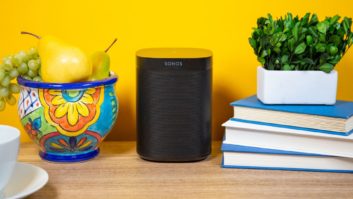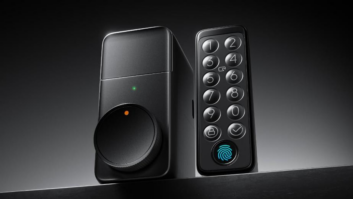March 1, 2016 – San Francisco – All that separates a regular sound system from a “smart” sound system is a tiny computer and some Wi-Fi. iothinks bridges that gap, as a small connected module that plugs into any standard audio system, giving users the sound features of a modern smart house without replacing a single speaker. iothinks works by outputting to standard audio formats, like optical cables and traditional headphone jacks, while simultaneously communicating with your phone, the Internet and other smart devices over Wi-Fi.
This adds a number of important sound features to a user’s home. The first is a soundtrack for your home life: iothinks can stream music from many different sources, like a phone, streaming services like Spotify, Pandora, SoundCloud or podcasts, and even its own built-in hard drive. Users can control it all with the iothinks app, letting them skip a song or adjust the volume without getting up to press the device’s buttons. Next is a narrator: iothinks has a voice for reading notifications, emails, the Sunday paper, or anything else its user would like to hear. Users can get important (or entertaining) information without lending their eyes to the task, helping them be more productive (or more relaxed). As it learns more about you, iothinks also begins to cleverly anticipate needs, playing just the right song or flagging timely information without being prompted. For instance, it‘ll read weather alerts shortly before a user leaves for work each day, or arrange an evening playlist based on a user’s favorite winddown music. Users can also override this and customize their own behavior instead.
iothinks was also designed with the rest of the smart home in mind. It can play music to a matching light show by syncing with smart lights (Philips HUE), and will automatically lower its volume if its user gets a phone call or email for some examples. It also works with IFTTT, a popular web interface that lets users create custom interactions with many other smart devices like Google Nest, Belkin WeMo and August Smart Locks. Developers can go further to create their own programs with the iothinks API.
Iothinks is the brainchild of two college friends, Timothy L’huillier and Benjamin Robitaillie, 23 and 24 respectively. Both the types to have music constantly playing in the background, they got frustrated that they’d have to switch on their computers just to play a song. As senior Cloud computing students, they knew there was a better way, and recognized that a smart audio system could do a lot more than save time switching music. “We wanted to make getting a smart home as simple as adding one small device,” says L’Huillier. “We went with sound not only because it’s the most comfortable way to communicate, but because most people already have speakers throughout their homes.” “That, and we’re music freaks!” adds Robitaillie. 10 months later, and they’ve created a near-complete product that already pulls the best of the Internet of Things into a single audio device.
Now, they’ve turned to Kickstarter to raise the €100,000 ($112,800) needed for quality assurance, manufacturing and distribution. Backers can pledge €99 ($111) to get their own iothinks, estimated to be delivered in November 2016. The Kickstarter campaign starts today and will last 34 days. Should backers pledge €500,000 or more, iothinks will also ship with voice control similar to Amazon Echo. For more information, visit the iothinks website, or contact Chris Orris at [email protected] or 1 (630) 294-6645, or Courtney Sims at [email protected]. ### About iothinks Founded in France by senior Cloud computing students and music geeks Timothy L’huillier and Benjamin Robitaillie, iothinks brings homes into the future by giving smart features to regular old sound systems. Their flagship product, also named iothinks, is designed to be the only device needed to turn a “dumb” home smart, with helpful voice notifications, clever automation, and limitless potential for customization and connectivity













